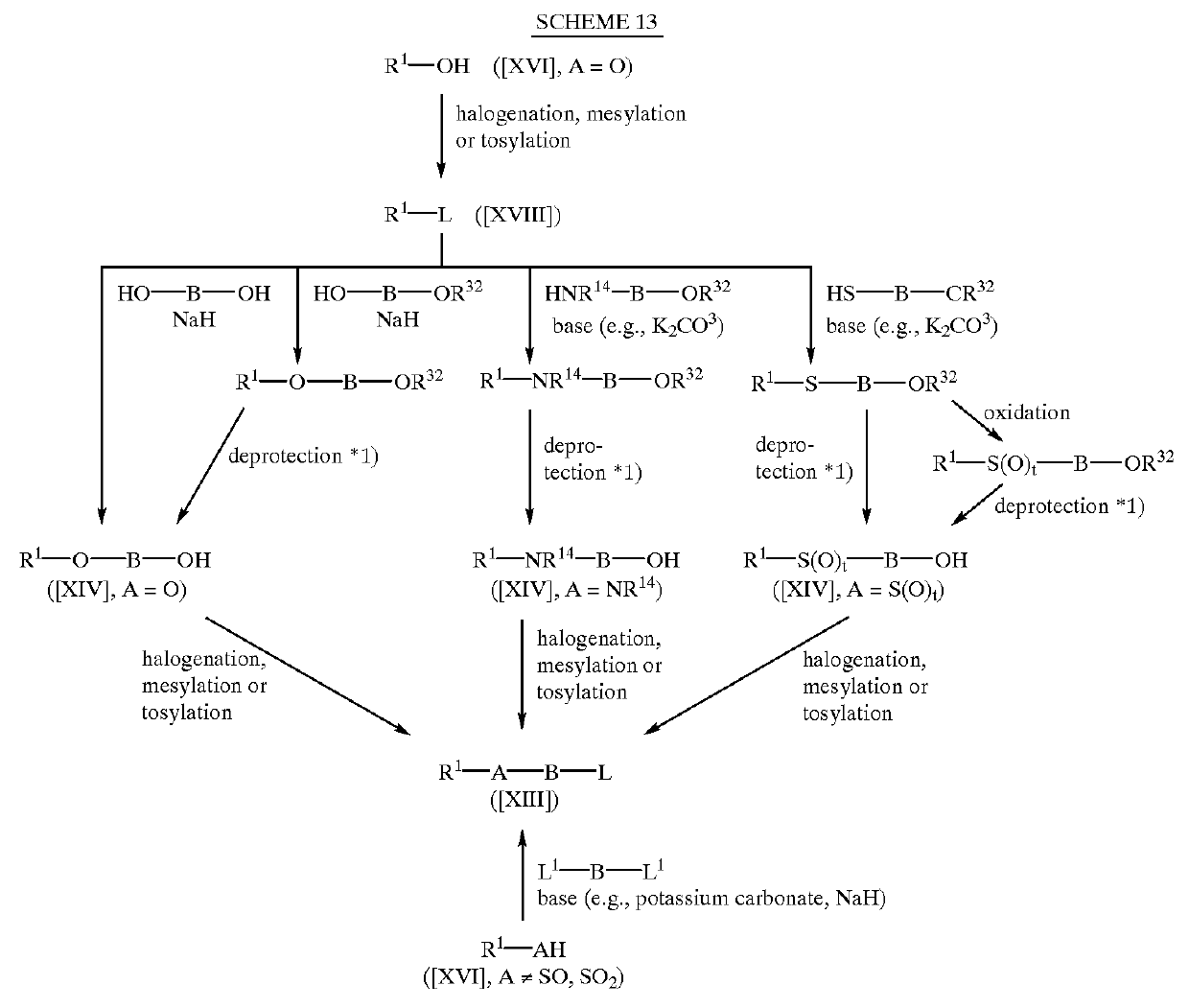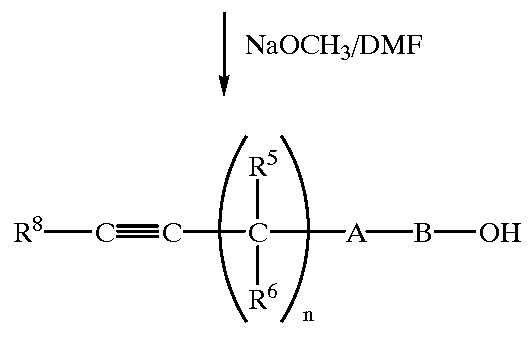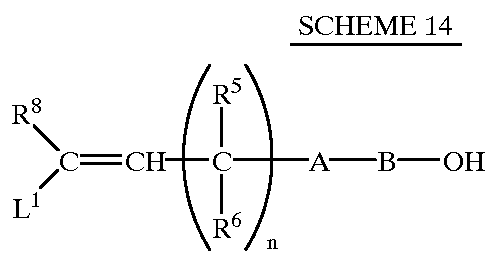Dihalopropene compounds, their use as insecticides/acaricides and intermediates for their production
a technology of dihalopropene and compounds, which is applied in the preparation of carbonyl compounds, heterocyclic compound active ingredients, biocide, etc., can solve the problem that it is not always said that these compounds are satisfactorily effective, and achieve the effect of preventing erroneous eating
- Summary
- Abstract
- Description
- Claims
- Application Information
AI Technical Summary
Benefits of technology
Problems solved by technology
Method used
Image
Examples
production example 12
Production of compound (49) by method (v) in production process O
A mixture of 0.26 g of 3,5-dichloro-1-(3,3-dichloro-2-propenyloxy)-4-(4-(3-cyano-3,3-dichloro-2-hydroxypropyloxy)butyloxy)benzene, 0.079 g of pyridine, 0.077 g of acetic anhydride, 10 mg of N,N-dimethyl-4-aminopyridine and 10 ml of N,N-dimethylformamide was stirred at room temperature for 30 minutes, to which 0.065 g of zinc dust was added. The reaction mixture was further stirred at room temperature for 1 hour, poured into 20 ml of diluted hydrochloric acid and extracted twice with diethyl ether. The diethyl ether layers were combined, washed with water, dried over magnesium sulfate and then evaporated to give a crude product. The crude product was subjected to silica gel chromatography, which afforded 0.19 g of 3,5-dichloro-1-(3,3-dichloro-2-propenyloxy)-4-(4-(3-chloro-3-cyano-2-propenyloxy)butyloxy)benzene (yield, 83%), n.sub.D.sup.23.0 1.5410.
production example 13
Production of compound (23) by production process E
To a mixture of 0.20 g of 4-(3-chloro-2-propynyloxy)butanol, 0.32 g of 2,6-dichloro-4-(3,3-dichloro-2-propenyloxy)phenol, 0.32 g of triphenylphosphine and 15 ml of tetrahydrofuran was slowly added dropwise 0.27 g of diisopropyl azodicarboxylate with stirring under ice cooling. After stirring at room temperature for 24 hours, the reaction mixture was concentrated. The residue was subjected to silica gel chromatography, which afforded 0.38 g of 3,5-dichloro-1-(3,3-dichloro-2-propenyloxy)-4-(4-(3-chloro-2-propynyloxy)butyloxy)benzene (yield, 71%), n.sub.D.sup.23.5 1.5511.
production example 14
Production of compound (47) by production process H
A mixture of 0.39 g of 4-(2,6-diethyl-4-(3,3-dichloro-2-propenyloxy)phenoxy)butyloxyacetaldehyde, 0.24 g of 1-propanol and 10 ml of cyclohexane was stirred at room temperature, to which 0.038 g of p-tolunesulfonic acid hydrate and 0.40 g of powdered molecular sieves SA were added. After stirring at room temperature for 30 minutes, the reaction mixture was filtered. The filtrate was added to water and extracted twice with diethyl ether. The diethyl ether layers were combined, washed with water, dried over magnesium sulfate and then evaporated to give a crude product. The crude product was subjected to silica gel chromatography, which afforded 0.38 g of 3,5-diethyl-1-(3,3-dichloro-2-propenyloxy)-4-(4-(2,2-dipropyloxyethoxy)butyloxy)benzene (yield, 77%), n.sub.D.sup.23.5 1.4975.
PUM
| Property | Measurement | Unit |
|---|---|---|
| boiling point | aaaaa | aaaaa |
| boiling point | aaaaa | aaaaa |
| temperature | aaaaa | aaaaa |
Abstract
Description
Claims
Application Information
 Login to View More
Login to View More - R&D
- Intellectual Property
- Life Sciences
- Materials
- Tech Scout
- Unparalleled Data Quality
- Higher Quality Content
- 60% Fewer Hallucinations
Browse by: Latest US Patents, China's latest patents, Technical Efficacy Thesaurus, Application Domain, Technology Topic, Popular Technical Reports.
© 2025 PatSnap. All rights reserved.Legal|Privacy policy|Modern Slavery Act Transparency Statement|Sitemap|About US| Contact US: help@patsnap.com



